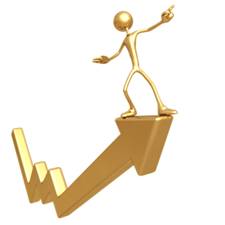For more stories like this, sign up for the PLANADVISERdash daily newsletter.
Portfolio Politics
In fact, we now have at least one candidate who says that Wall Street’s problems are so critical that he’s coming off the campaign trail to deal with them.
Still, with the presidential election only about a month away, prudent investors might well be wondering which candidate – or perhaps which party – will prove to be “kinder, gentler’ to their portfolio.
A recent CNETnews.com report claims that in looking at data from Ibbotson Associates that covers 1926 through the end of August, the market – at least the market as defined by the Standard & Poor’s 500 – has done better under Democratic presidents (9.2% annually after inflation) than under Republicans (4.6%).
Moreover, the report goes on to claim that small cap stocks have done even better under Democratic administrations, returning 16.5% a year after inflation, versus just 2.2% annually under Republicans. On the other hand, bonds have done much better in Republican than Democratic administrations (4.8% versus negative 0.4% annually, after inflation).
Fed Factor
Setting aside for a minute just how relevant those 1926 comparisons might be to today’s market, and questions about just how much a president can impact market trends, the report goes on to cite the perspective of one Robert Johnson, a former finance professor who now helps run the CFA Institute. According to the article, Johnson claims that the real answer lies not in the White House, but with the Fed. While it seems a bit of Fed Policy 101, the article notes that in years when the Fed tightens the money supply by raising interest rates, the market does poorly; and when the Fed eases by cutting rates, the market does well. More interestingly, those rate cuts are apparently most common in the third year of a presidential administration – and that helps explain why stocks have a significant tendency to do roughly twice as well in Year 3 of presidential terms as in years 1, 2 or 4.
Of course, once you account for the market impact of the Fed’s actions, the apparent predictive power of the presidential cycle evaporates – and if you don’t know whether the Fed will have to raise or lower interest rates, it doesn’t matter which party is in power.
Those betting (hoping) for gridlock – say a President McCain struggling with a Pelosi/Reid Congress – can find a glimmer of hope in the Stock Trader’s Almanac. Since 1949, the Dow (yes, we’re changing reference points) has gone up by an annual average of 19.5% when the White House was Democratic and Congress was Republican. On the other hand, that’s been the case in just six of those 60 years (all during President Clinton’s term). Going back to 1926 (and the S&P 500), the market has gained an average of 6.3%, after inflation, whenever one party controlled the White House and the other held the majority in both houses of Congress. That’s less than the 6.8% annual average for the period as a whole.
But – unless Congress can work something out this week – unless, of course, what they work out is worse than the disease (and it could be) – the next president – whoever it is – is likely to have his hands full.
You Might Also Like:
« SEC Announces Compensation for Franklin-Templeton Investors
